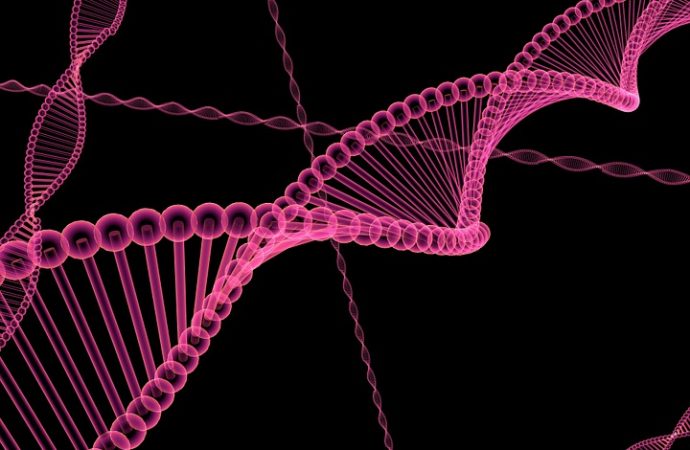Scientists propose the creation of a synthetic human genome.
Do you remember the Human Genome Project (HGP)? Launched in 1990 and declared complete in 2003, it allowed the sequencing of the whole human genome. Scientists could suddenly read the human DNA, base after base- each base being a forming unit of a DNA molecule- in the same way we add letter after letter to form a word.
The long “words” that came out of the HGP thus mirror the structure of human DNA. Some stretches of letters represent genes (protein-coding sequences) and are interpreted by our cells as blueprints to synthesize proteins; others are non-coding sequences with regulatory or structural roles.
Having deciphered almost the entire “DNA word”, scientists started to confront the next main question: how to make complete sense of it? How to understand the meaning, function and regulation of each gene and non-coding sequence? How to discover their role in diseases, and design ways to fix aberrant DNA sequences to prevent or cure illnesses?
The task is huge.
Understanding DNA function
A multitude of labs have been focusing on a small number of individual genes to understand their function. But despite the intense work, their efforts are not systematic. It is like having hundreds of research teams scattered around the world trying to build an enormous puzzle, not knowing how the various small pieces they are assembling relate to each other. Even if the teams of scientists exchange information to some extent, their endeavors are too time-consuming. Could there be a more efficient approach?
“Let’s write the human genome!”
In a perspective paper published in Science, Boeke, from NYU Langone Medical Center, and a number of colleagues from various American and European institutions, propose a different strategy to make sense of the information contained in the DNA sequence. Practically, what they suggest is: “Now that we have read the DNA genome, let’s write it”.
Instead of focusing on distinct genes, the scientists propose to synthesize (“write”) the whole human DNA, put it in a cell and see how it influences the cell’s behavior in different conditions.
In this way, the researchers will be able to connect the changes in cell’s behavior to specific DNA sequences (which are exactly known since they have been purposely synthesized). Besides, it will be easier to study the impact of gene mutations, with the introducion of specific changes in the DNA, by means of the most recent ‘gene-editing’ techniques. It’s like building different models of a car engine and observe how a car performs when powered either by the original engine or by one of the other slightly different versions of it.
The writing process
The first phase: The scientific advances of the HGP-write project will depend on how fast the supporting technologies develop. Therefore, the project will start by focusing on only a small fraction of the entire genome. In this phase, scientists may address issues like:
- chromosomal function in diseases, by writing a whole
- the role of non-coding DNA in gene regulation, genetic diseases or human traits
- the regulation of cancer genotypes, by writing and editing the genetic material of cancer types
- the development of gene therapies, by writing complex DNA sequences and studying their influence in specific biochemical pathways
- the development of “organ-on-chip” technologies that reproduce human organs in a very small scale, to study their function in health and disease
The second phase: In the long run, HGP-write could contribute to, among others:
- the development of vaccines and cell-based therapies
- the production of human genomes resistant to cancer
- the production of whole human organs in order to model diseases or to use them in transplantation
- the production of a “reference genome” composed of the most common variants of all human genes
Moreover, the genome-writing project could be extended to other organisms, from yeasts to flies, to larger animals. For instance, scientists could modify the pig’s genome to make their organs compatible for human transplantation.
Challenges
Reducing project’s costs: Scientists admit that the high costs of DNA synthesis may hinder the genome-writing project, but they are confident that those costs will drop as the project goes on, as it happened with the DNA-sequencing technology during the genome sequencing phase. A S100-million funding will be sufficient to set off pilot projects and the total costs of the HGP-write project are estimated to be less than the S3 billion that were required for HGP-read.
Obtaining a functional synthetic genome: In parallel with the DNA synthesis techniques, the scientists will have to develop successful methods to introduce large and functional DNA molecules into a cell. Obviously, if the whole genome is ever produced but left in a tube, it cannot reveal much about real-life biology.
Identifying goals: The manipulation of DNA with the goal of engineering living cells and organs, with later the theoretical possibility of producing living organisms, has important ethical, legal and social implications. The scientists state the necessity of debates involving the researchers and the public, in order to identify common goals with respect to society’s values, researchers’ and research participants’ safety, and environment protection.
Controversy
So, are we getting closer to creating an artificial human being?
Writing a genome means producing its entire DNA from chemical reagents, thus bypassing the need of having a cell make it through natural processes. If the HGP-write project gets started, it will undoubtedly push us a tiny step closer to producing artificial human life, though this endpoint will remain beyond the visible horizon and it might never be attainable.
The scientists suggest that, after a first general debate to approve accurate and responsible guidelines, further issues will be discussed as they arise, always in the consideration of the ethical, legal and social implications of the project. Ultimately though, everything is left to “good sense”, hoping that humans have in general (and naturally) evolved enough of it, and that no “negative-outliers” scientists will get involved in this project.
References:
Boeke, J., Church, G., Hessel, A., Kelley, N., Arkin, A., Cai, Y., Carlson, R., Chakravarti, A., Cornish, V., Holt, L., Isaacs, F., Kuiken, T., Lajoie, M., Lessor, T., Lunshof, J., Maurano, M., Mitchell, L., Rine, J., Rosser, S., Sanjana, N., Silver, P., Valle, D., Wang, H., Way, J., & Yang, L. (2016). The Genome Project-Write Science DOI: 10.1126/science.aaf6850
The Human Genome Project, DNA, genetics, DNA synthesis



